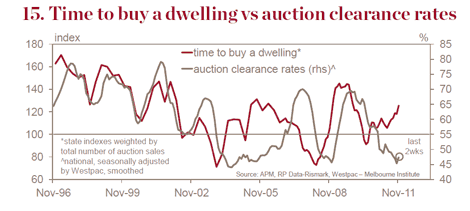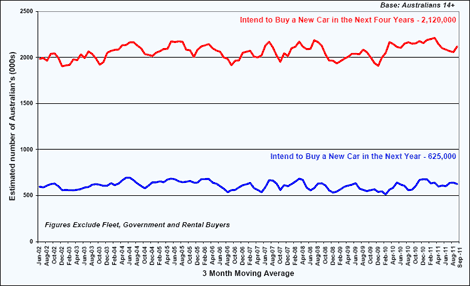Consumers intend to buy a house but holding off on a car: Westpac Red Book
Consumers appear far more willing at present to buy a new house than a new car following the Reserve Bank cutting interest rates on November 2, according to the latest Westpac Red Book.
Westpac’s “time to buy a dwelling” sub-index rose 6.5% to 125.8 to be in “strongly positive territory” and above the long-run average of 122.3 and the 10-year average of 110.4.
In comparison “time to buy a vehicle” fell 3% in November to be unchanged since August and slightly below its long-term average.

Source: Westpac
According to Red Book editor and Westpac senior economist Matthew Hassan, the strong rise in the time to buy a dwelling index “could be the cue for a housing upturn”.
“However, as with the headline sentiment results, there are some important caveats,” he says.
“Firstly, the rally needs to be sustained. As with headline sentiment, that will depend at least partly on how follow-on moves from the RBA stack up against consumers’ expectations.
“The last three rate cut cycles saw total cuts of 425 basis points, 200 basis points and 250 basis points. Westpac expects the current cycle to see a total of 100 basis points with a steady tempo rather than rapid easing.
“Secondly, job loss fears will need to ease further. A simple model of finance approvals based on the ‘time to buy a dwelling’ index and unemployment expectations suggests the current mix will see soft demand well into 2012.
“We suspect more rate cuts and improvements in both buyer perceptions and/or job security will be required to establish a housing upturn. Even then debt/risk aversion may mute the response”
According to the Red Book, the drop in the ‘time to buy a vehicle’ index, while not too dramatic (the index points to a 2% decline in sales over the next 6mths), is curious “given the backdrop of rate cuts, attractive financing offers from many carmakers and continued falls in vehicle prices (–2.8% in the year to June)”.
An aversion to new car purchases was particularly strong in Victoria where consumers registered a sharp 11% drop.
“The state series are very volatile but it seems notable that Victoria consumers have seen less of an improvement in unemployment expectations in recent months compared to their peers,” says Hassan.
Overall, the November Red Book finds that the change in interest rates has delivered “some genuine positives” with a sharp turnaround in consumers’ unemployment expectations noteworthy.
Lingering anxiety about jobs remains “but there is no longer the sort of escalating fear that in the past has marked the start of significant cut -backs in discretionary spending”.
“As such, one of the key downside risks to the near term outlook for consumer demand has improved considerably,” says Hassan.
“The latest retail data has also held up better than expected. We remain very sceptical about the solid growth in total spending shown in the second quarter national accounts, but a milder consumer slowdown than previously envisaged now looks likely.”

Source: Roy Morgan Research
In the shorter term an estimated 625,000 Australians intend to buy a new car in the next 12 months (excluding fleet, government and rental nuyers). Although this is down marginally on the August 2011 figure of 640,000, it remains 14,000 above the short-term average2 of 611,000.
Norman Morris, industry communications director of Roy Morgan Research, says: “Since hitting a record high of more than 2.2 million in March this year, long-term new car buying intentions have declined for the past five months. It’s not surprising to see that consumer confidence has also declined over this same period and therefore great news for the Automotive Industry to see both metrics back up again in September.
“Of the mainstream brands, Honda has improved the most over the short term, with the Accord Euro driving much of the brands recent gains.
“Amongst the luxury brands, both Mercedes-Benz and BMW have improved over the recent term, with BMW posting their highest result for 2011. Conversely, after hitting their best result in August this year Audi has declined to 1.5% of total intentions.
“With many of the luxury marquees having new models destined for our showrooms over the next 12 months (including the Audi Q3 and BMW’s all new 3-Series) it will be very interesting to see if any of the luxury brands can take market dominance away from BMW over the coming 12 to 18 months.
“The complete Roy Morgan Automotive Leading Indicators Report delivers detailed coverage of the health of the Australian automotive market.”